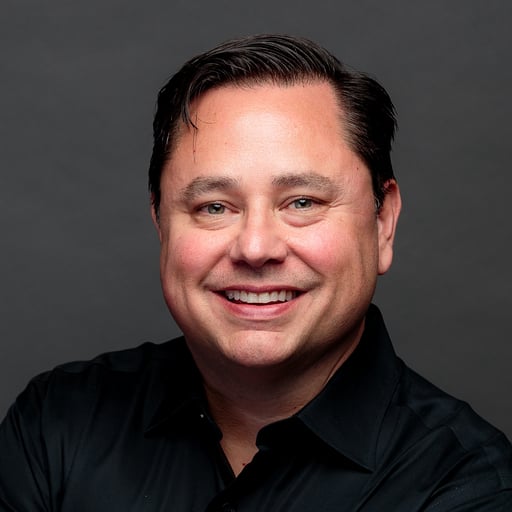Most expensive drugs in the US for employers
It seems unbelievable, but the monthly cost of supplying some of these drugs costs more than the average car.
Connected Navigation Platform
Guiding to high-value care
Behavioral Health
Foster a mentally healthy workplace
EAP
Supporting holistic wellbeing
Virtual MSK Care
Reimagining musculoskeletal care
Virtual Primary Care
Powered by smart navigation
Surgery Centers of Excellence
Best-in-class surgical outcomes
Virtual Urgent Care
Immediate care, any hour of the day
Chronic Care
A new approach to chronic care
Integrations
Flexible to any strategy
4 min read
 Rick Ramos
:
September 12, 2017
Rick Ramos
:
September 12, 2017

“Complicated problems require complicated solutions,” and healthcare is no exception. Most employers cannot invest the time to learn about the many pieces of the healthcare puzzle. They need innovative benefit advisors who stay on top of and lead industry trends. With employers inundated by news of ever-rising prescription costs, benefit advisors introducing ways to cut prescription spend by 20% are sure to stand out from the crowd.
This article is meant to serve as an introduction to the value of several prescription programs HealthJoy has integrated into our platform for some of our clients. These programs operate as a complement to the pharmacy benefit manager (PBM) and deliver significant savings especially for self-insured, mid-market employers. Keep in mind that these are one part of a prescription strategy which is one part of a larger healthcare strategy. As employee benefits industry leader David Contorno summed it up, “There’s no silver bullet a broker or consultant can bring in that will solve healthcare. View each solution as part of a larger strategy to reduce cost, and then you get a much stronger effect.”
Employers can no longer afford to neglect prescription costs, as pharmacy spend now accounts for 17% of all medical spend. We can break down the larger problem of prescription costs into two parts: generic and brand name drugs. Generic drugs account for 90% of prescriptions and 28% of pharmacy spend. Generics are a more accessible pool for reducing costs due to their quantity. Brand name drugs make up only 10% of scripts, but each script has a significant impact on rising prescription costs. Mail-order prescription sourcing programs that work alongside a client’s existing PBM combat both sides of pharmacy spend.
While the cost savings are evident to self-funded employers, an arguably greater value is that to the employee and her family. For Mr. Contorno, these programs are most important in that they address prescription adherence: “Typically as medical and drug prices have gone up, employee cost sharing has gone up. That drives care and adherence down. We use programs like Rx ‘n Go and Rx Manage because they are strategies that help both the plan and the employees. That’s the paradigm you have to work in.”
Focusing on the generic and maintenance drugs that make up the majority of scripts, Rx ‘n Go offers access to over 1,200 generic medications as a complement to a typical employer-sponsored Rx benefit. Employers pay a flat rate per Rx for the drugs that members fill through Rx ‘n Go, while employee cost is reduced to zero. They deliver up to a 90-day supply of generic maintenance medications right to an employee’s doorstep. The company can typically demonstrate 15% to 25% in plan savings on the covered medications due to their focus on the most efficient acquisition and distribution of generic medications. Mort Jorgensen, one of the owners of Rx ‘n Go, explained, “we can’t necessarily get the prescriptions at a lower cost, but we are mission-driven. Helping employees reduce cost, access more choices, and improve medication compliance is what we do. Company savings are a great side effect of our mission.”
Addressing the other end of drug costs, Rx Manage and ScriptSourcing reduce the costs of brand name drugs for employers. Employee share is reduced to zero in these programs as well. These companies get their prescriptions through English-speaking countries that have the same quality control standards as the U.S. (referred to as “Tier 1”) – Canada, the United Kingdom, Australia and New Zealand. These countries often have lower prices because they negotiate with drug manufacturers as a country rather than as relatively tiny employers and insurance carriers. It’s also great that all drugs come with instructions written in English rather than potentially other languages.
There are two main barriers to actually setting up the program. The first is structural – does the current plan allow the employer to integrate a third party sourcing program? Some of our partners reported that fully-insured plans and carrier-owned third-party administrators (TPA’s) can make this process difficult.
The second barrier is educating an employer on the value and appropriateness of such programs. Some companies have a hard time understanding the incredible value these programs can provide. Or they are indifferent to the value stories whether around cost or benefit to employee health and wellbeing. Employers may also be concerned with importing prescriptions. Bill Hepscher, owner at Rx Manage, explains to potential clients the difference between “filling your prescription while on vacation in London, and stereotypes around buying prescriptions south of the border. When people think prescription importation, they default to the latter. Once they understand where the prescriptions are coming from, most employers get on board.”
When rolling out one of these programs, you will face the same obstacle as with most other strategies. You have to figure out how to get employees to learn about and use it. How do employees learn that they can save $50 each month? How do you monitor and follow up so that they follow through, especially for high income individuals not motivated by zero cost? It cannot be just another component that’s a phone number contained in a benefits packet that’s thrown in a drawer. You need an outlet for employees to say, “Hey, I got prescribed this drug. Where do I fill it?” ScriptSourcing founder Gary Becker consistently focuses on engagement “because 70% of American households have $1,000 in savings or less. They don’t have time to focus on their benefits. We need to make sure they leverage zero copay programs, adhere to their medication, and don’t ultimately end up in the emergency room.”
Cutting-edge consultants and brokers are not just going to educate, inform and incentivize employees to make better decisions. Mr. Contorno, for example, takes in the pharmacy data each month and proactively reaches out to employees who could fill their prescription through one of these programs. HealthJoy also serves as that communication platform in addition to being the employee’s resource for all of their benefits. Employees know where to turn when they get a new script, and HealthJoy’s timely and personalized reminders won’t let them forget. Additionally, HealthJoy’s prescription optimization algorithm contains 7 other strategies to save employers money.
The most important recommendation is to take action. Make steps toward stopping rising prescription costs, whether they are one of these programs or one of HealthJoy’s seven other techniques. If you would like to connect with any of these programs or learn about how HealthJoy boosts engagement and ROI, schedule a demo below. We at HealthJoy work with a variety of vendor partners and do a fair amount of education and introductions for our benefit advisors. If there is a topic you are interested in, I’d love to hear from you.

It seems unbelievable, but the monthly cost of supplying some of these drugs costs more than the average car.

Prescription medications are expensive, and Americans take a lot of them.

This renewal season isn’t just another tough cycle—it’s a client retention crisis in the making. While national headlines forecast a modest 6-9%...